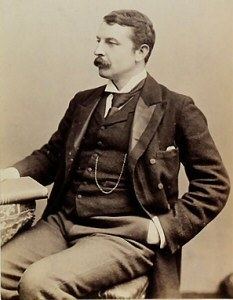Nationality English Name Frank Beddard Author abbrev. (zoology) | Role Author | |
 | ||
Born 19 June 1858Dudley ( 1858-06-19 ) Known for AnnelidsAnimal coloration Died July 14, 1925, Hampstead, United Kingdom Books Animal Coloration, The Cambridge Natural H, Earthworms and Their Allies, Earthworms and Their Allies ‑ Sc, A Monograph of the Ord | ||
Frank Evers Beddard FRS FRSE (19 June 1858 – 14 July 1925) was an English zoologist. He became a leading authority on annelids, including earthworms. He won the Linnean Medal in 1916 for his book on oligochaetes.
Contents
Life
Beddard was born in Dudley, Worcestershire the son of John Beddard. He was educated at Harrow and New College, Oxford. He died in Hampstead in London.
Career
Beddard was naturalist to the Challenger Expedition Commission from 1882 to 1884. In 1884 he was appointed prosector, responsible for preparing dissections of animals that had died, at the Zoological Society of London, following the death of William Alexander Forbes.
Beddard became lecturer in biology at Guy's Hospital, examiner in zoology and comparative anatomy at the University of London, and lecturer in morphology at Oxford University.
Apart from his publications on wide-ranging topics in zoology, such as Isopoda, Mammalia, ornithology, zoogeography and animal coloration, Beddard became particularly noted as an authority on the annelids, publishing two books on the group and contributing articles on earthworms, leeches and also on another phylum of worms, the Nematoda for the 1911 Encyclopædia Britannica, where he used the initials "F.E.B.". Coles cites W.H. Hudson's 1919 The book of a naturalist, page 347:
"One evening I was with Mr Frank E. Beddard at his club and taking advantage of the occasion, asked him some question about earthworms, he being the greatest authority in the universe on the subject."Beddard contributed biographies of zoologists William Henry Flower and John Anderson for the Dictionary of National Biography. He was the author of volume 10 (Mammalia) of the Cambridge Natural History.
Legacy
Beddard's olingo (Pocock, 1921) is named after him.
